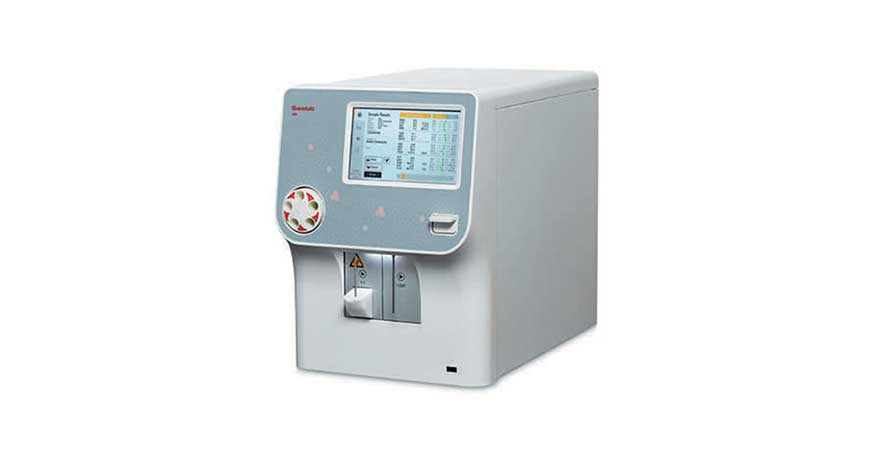Product Watch
Swelab™ Alfa Plus from Boule Diagnostics

Hematology systems from Boule Diagnostics have successfully catered the decentralized testing segment since the very first European blood cell counter was launched in 1956, a predecessor of today’s Swelab Alfa Plus hematology analyzers. Keeping this focus for such a long time has provided Boule with many years of experience and knowledge of customer needs in this segment.
A large part of the approximately 10,000 installations of Boule 3-part hematology analyzers in India are in small- to mid-sized hospitals and clinics located in rural areas. Such installations put special demands on quality, as service and support can be at a far distance.
Swelab Alfa Plus automated hematology system is tailored to the clinic or smaller hospital laboratory and is equipped to deliver results you can trust:
- Complete blood count from a fingerstick sample;
- Rapid results to support early diagnosis and initiation of treatment; and
- Robust equipment design helps ensure instrument uptime.
Swelab Alfa Plus features a micro-pipette adapter (MPA) inlet that enables a complete blood count from one drop of blood collected in a capillary sample tube. The MPA procedure is a direct method specially designed to allow hematology testing in patients from whom a venous blood sample is not available. No vacuum tube, predilution, or tube mixing prior to analysis is required.
Swelab Alfa Plus features a high-precision shear valve for accurate sample aspiration and dilution. A closed shear valve design minimizes leakage risk, ultimately reducing maintenance requirements.
Swelab Alfa Plus employs well-proven and robust measurement technologies. The analyzer uses impedance for white blood cell (WBC), red blood cell (RBC), and platelet (PLT) counts, while hemoglobin (HGB) is determined spectrophotometrically. The analyzer provides quantitative results for 22 parameters (16 IVD + 6 RUO parameters), with histograms for WBC, RBC, and PLT.
Swelab Alfa Plus sample analysis software displays information messages related to pathology that might be present in the sample. The sample pathology information includes a short message, defining the sample abnormality followed by recommendations for that sample. The information can be triggered by the following mechanisms:
- Histogram shape abnormalities detected by system software calculations; and
- Selected values that exceed defined limits outside the reference range.
Swelab Alfa Plus analyzer only uses two reagents–Diluent and Lyse–which greatly facilitates handling and logistics and helps reduce running costs. At Boule, reagents are designed and developed in conjunction with the analyzer to provide optimized performance and enhanced serviceability of the complete system. Reagents and analyzer measurement technology, including the analysis algorithms, are fine tuned to each other to produce the most accurate patient results. Formulations, dilutions, mixing, and reaction kinetics are all carefully matched and optimized to work together. Automatic rinse cycles omit the need for daily cleanings.
Control material designed specifically for the system ensures correct quality control measures. Like the reagents, the control and calibrator cell populations are matched to the system measurement technologies and analysis algorithms.
 Jeanette Nikus
Jeanette Nikus
PhD, Global Product Manager,
Boule Diagnostics
At Boule, we are good at flow dynamics. We know what problems can arise from transporting a mixture of blood and liquid and have taken them into account when designing our fluidic system. Compared with a piston-driven control of the pressurized fluid, the flow is controlled by air and vacuum pumps in our analyzers to reduce leakage risk. Instead of monostable multiport valves, Boule proprietary bi-stable pinch valves are used to eliminate dead areas where a slow flow constitute a risk of protein buildup.
Compared with a syringe-based aspiration module that is an open system and therefore sensitive to environmental factors such as temperature and pressure and less suitable for use in dusty environments, our shear valve aspiration unit and mixing cups have a closed design that prevents dust particles to enter with the risk of being falsely counted. A closed design also allows keeping the shear valve always soaked in liquid to avoid wear and tear, ultimately mitigating the need for maintenance.













